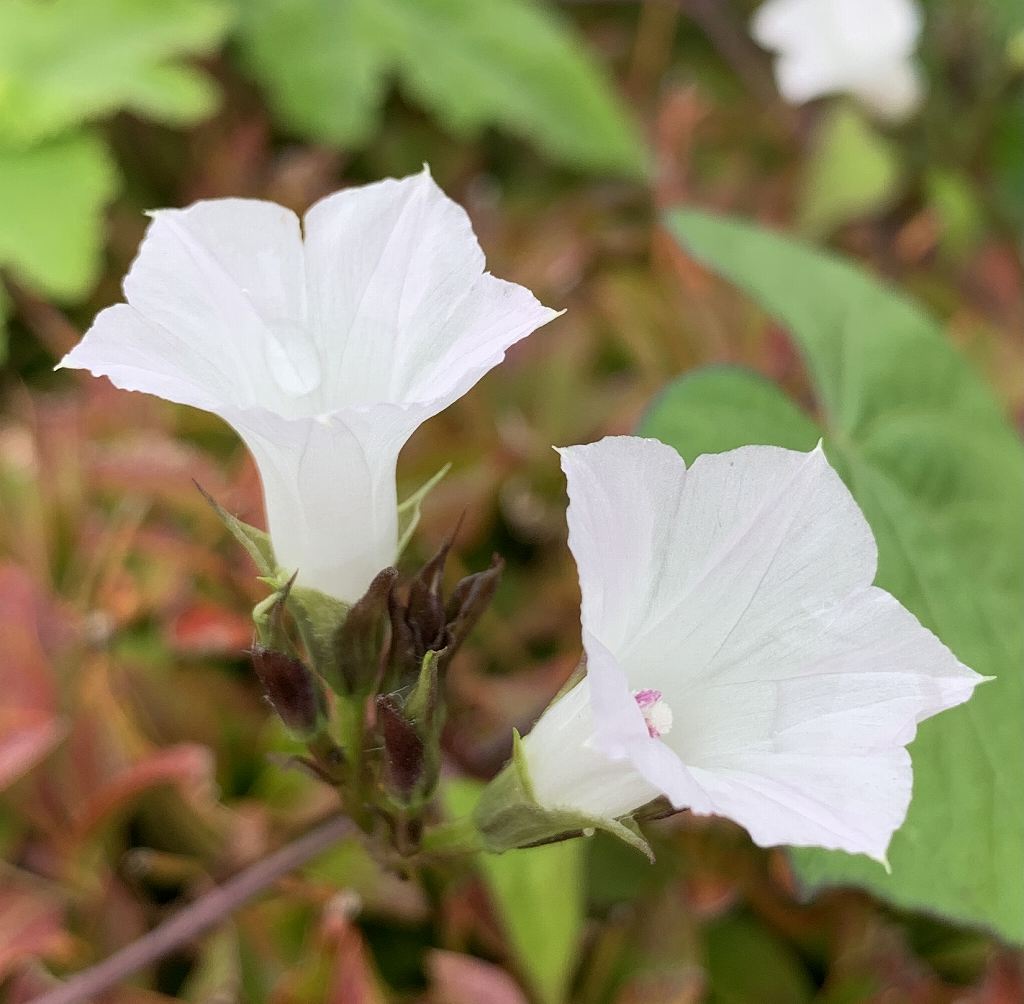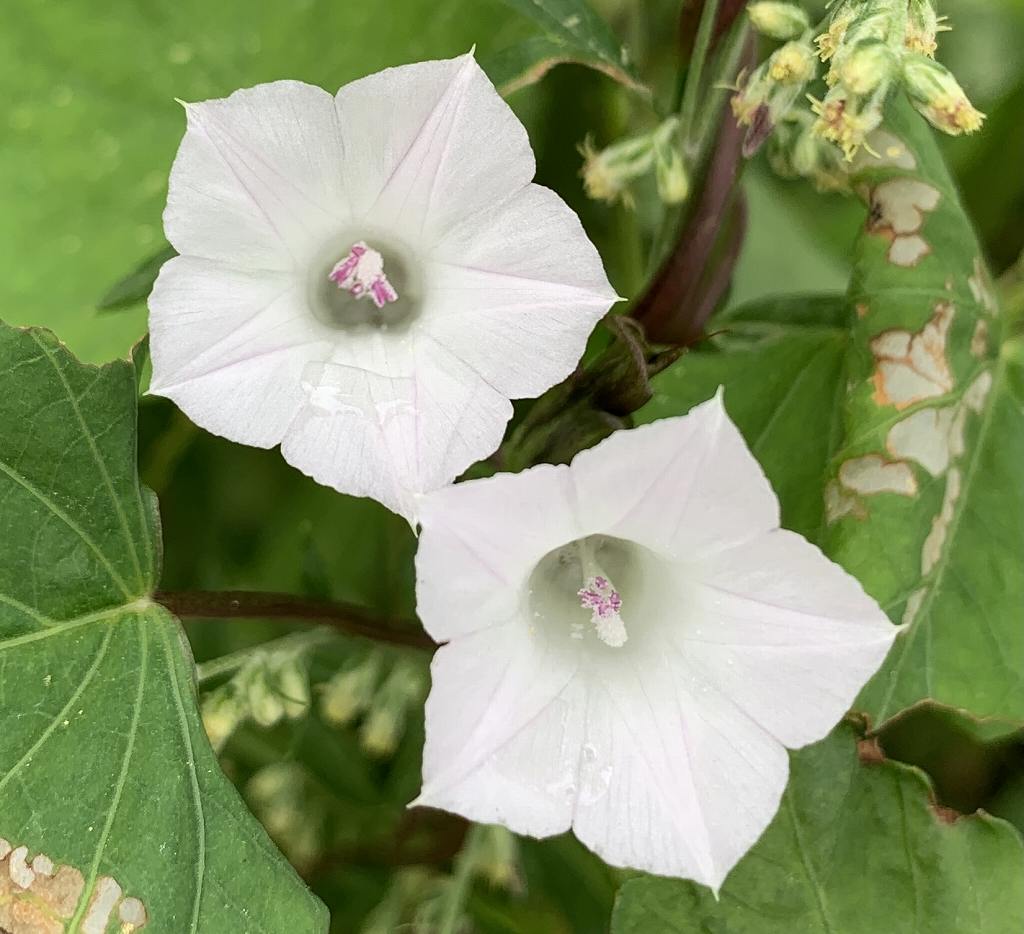マメアサガオの花は白色で、雄しべの先の葯は赤色。日本へは輸入穀物に混じって伝来し、今では北海道を除くほぼ全域で野生化しています。
The flowers of the Ipomoea lacunosa are white, and the anthers at the tips of the stamens are red. It was introduced to Japan mixed with imported grains, and is now wild in almost all areas except Hokkaido.
【仮名】マメアサガオ
【和名】豆朝顔
【英名】Ipomoea Lacunosa
【学名】Ipomoea lacunosa
【誕生】08/ 28
【開花】07, 08, 09月
【花色】White



マメアサガオ
マメアサガオの生態
マメアサガオはヒルガオ科サツマイモ属の一年草です。原産地は北米で、日本には1940年代、輸入穀物に種子が混入して伝来。1950年代に東京近郊から帰化が進み、今では北海道を除くほぼ全域で野生化しています。花言葉は「見つけたら幸せ」。似た花は「ホシアサガオ」です。
マメアサガオの形態
マメアサガオは全体が無毛。茎はつる性でよく分岐し、モノに巻きつきながら長く伸びます。葉は細長い長卵形やハート形で葉柄が長く、互生。花茎は葉腋1カ所から1~2本が立ち上がります。花柄は短く、稜があり、イボ状の突起が密生。花は白色で、雄しべの先の葯は赤色です。
マメアサガオに似た花
マメアサガオに似た「ホシアサガオ」は葉が丸いハート形。花茎は葉腋1カ所から何本も立ち上がります。花は紅紫色で周りの色が薄く、中心の色が濃く、雄しべの先の葯が白色。原産地は熱帯アメリカで、日本には第二次世界大戦後に伝来し、今は関東以西で広く野生化しています。
Ipomoea Lacunosa
Ipomoea lacunosa is an annual plant of the genus Ipomoea in the family Convolvulaceae. The place of origin is North America, and it was introduced to Japan in the 1940s when seeds were mixed with imported grains. Naturalization progressed from the suburbs of Tokyo in the 1950s, and now it is wild in almost all areas except Hokkaido. The flower language is “I’m happy if I find it.” A similar flower is “Ipomoea triloba”.
The whole Ipomoea lacunosa is hairless. The stem is vine-like and well-branched, and grows long while wrapping around things. The leaves are elongated long oval or heart-shaped with long petioles and alternate. One or two flower stalks stand up from one place on the axil. The peduncle is short, with ridges and dense wart-like protrusions. The flowers are white and the anthers at the tips of the stamens are red.
“Ipomoea triloba”, which resembles a Ipomoea lacunosa, has a heart shape with round leaves. Many flower stalks rise from one place on the axil. The flowers are magenta, the surrounding color is light, the center color is dark, and the anthers at the tips of the stamens are white. Originating in tropical America, it was introduced to Japan after World War II and is now widely wild west of the Kanto region.


